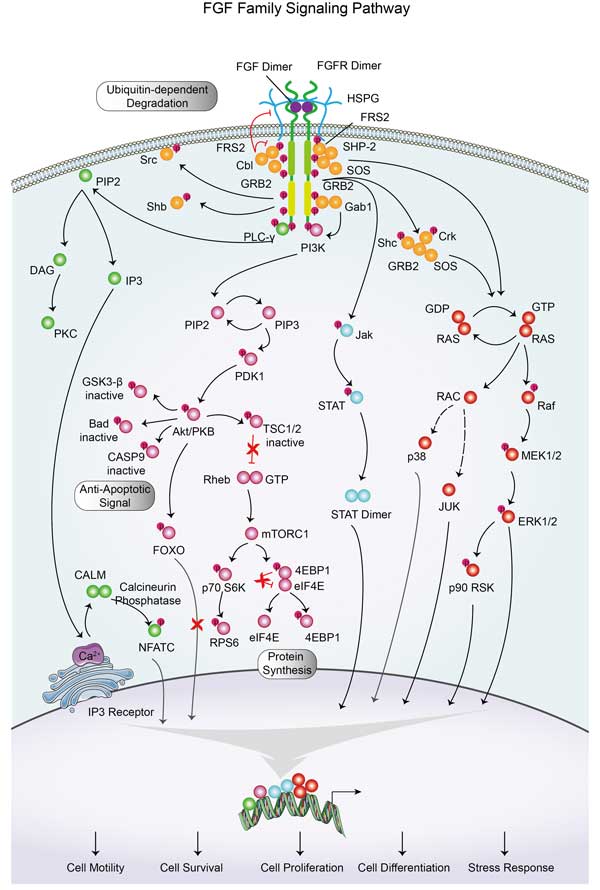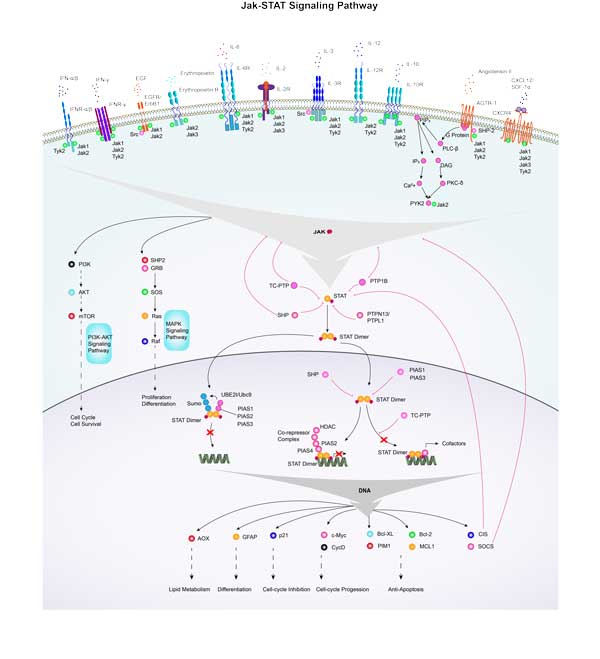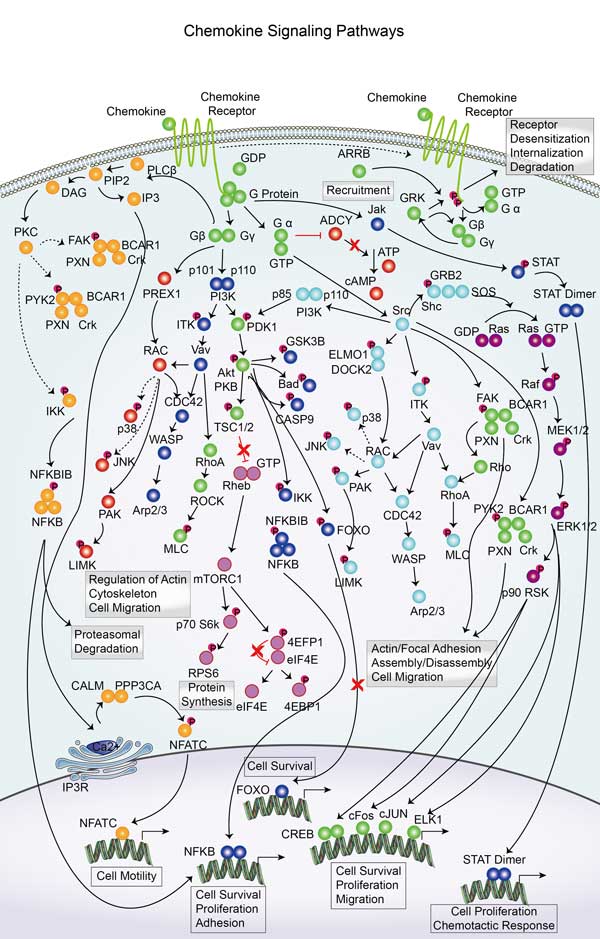SRC
-
Official Full Name
v-src avian sarcoma (Schmidt-Ruppin A-2) viral oncogene homolog -
Overview
This gene is highly similar to the v-src gene of Rous sarcoma virus. This proto-oncogene may play a role in the regulation of embryonic development and cell growth. The protein encoded by this gene is a tyrosine-protein kinase whose activity can be inhibited by phosphorylation by c-SRC kinase. Mutations in this gene could be involved in the malignant progression of colon cancer. Two transcript variants encoding the same protein have been found for this gene. -
Synonyms
SRC;v-src avian sarcoma (Schmidt-Ruppin A-2) viral oncogene homolog;ASV;SRC1;c-SRC;p60-Src;proto-oncogene tyrosine-protein kinase Src;proto-oncogene c-Src;tyrosine kinase pp60c-src;tyrosine-protein kinase SRC-1;protooncogene SRC, Rous sarcoma;EC 2.7.10.2
Recombinant Proteins
- Human
- RSV
- Zebrafish
- Rhesus macaque
- Mouse
- Chicken
- E.coli
- HEK293
- Insect Cells
- Sf9 Cells
- Mammalian Cells
- Sf21 Cells
- HT-1080
- His
- GST
- Avi
- Fc
- Non
- Flag
- DDK
- Myc
Background
What is SRC protein?
SRC (SRC proto-oncogene, non-receptor tyrosine kinase) gene is a protein coding gene which situated on the long arm of chromosome 20 at locus 20q11. This gene is highly similar to the v-src gene of Rous sarcoma virus. This proto-oncogene may play a role in the regulation of embryonic development and cell growth. The protein encoded by this gene is a tyrosine-protein kinase whose activity can be inhibited by phosphorylation by c-SRC kinase. The SRC protein is consisted of 536 amino acids and its molecular mass is approximately 59.8 kDa.
What is the function of SRC protein?
SRC is a non-receptor tyrosine kinase belonging to the SRC family of kinases (SFKs). SRC protein plays a variety of biological roles in the cell. SRC promotes cell proliferation and prolongs cell survival by phosphorylating and activating a variety of downstream effector molecules, such as transcription factors and cell cycle regulatory proteins. SRC kinase plays a key role in regulating cytoskeletal remodeling and the formation of cell adhesion sites, which affects the cell's ability to migrate and adhere to the external environment. SRC is involved in the process of cell differentiation by influencing the activity of specific transcription factors and the interaction of extracellular matrix, especially in the differentiation of bone marrow cells and epithelial cells.
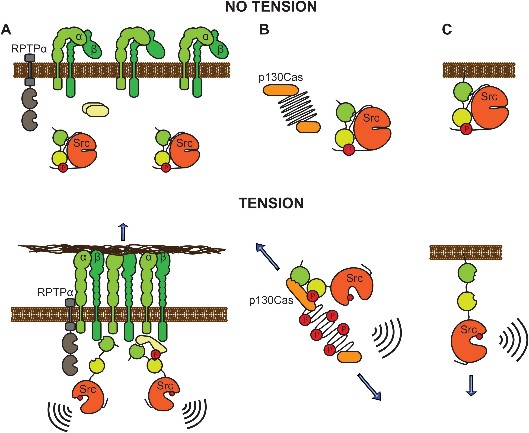
Fig1. Modes of Src mechanoactivation and mechanosignalling. (Lenka Koudelková, 2021)
SRC Related Signaling Pathway
SRC kinases are involved in several signaling pathways, including integrin signaling pathways, growth factor signaling pathways, and hormone receptor signaling pathways. By activating a variety of substrates downstream, SRC influences cellular behavior and physiological responses. SRC protein can activate RAS-RAF-MAPK signaling pathway and promote cell proliferation and survival. Specifically, SRC proteins can bind and activate RAS or RAF kinases, which further activate the MAPK signaling pathway and promote cell proliferation and survival. SRC protein can also activate the PI3K-AKT signaling pathway, promoting cell proliferation and survival. SRC protein can also activate the PLC-γ signaling pathway and promote cell proliferation and differentiation. The SRC protein can also activate the FAK signalling pathway, promoting cell migration and invasion.
SRC Related Diseases
Src proteins have been extensively studied for their role in a variety of cancers, including breast, colon, pancreatic, lung, ovarian, and central nervous system cancers. Src kinase plays a role in cardiac development and function, and its abnormal expression or activity is associated with the development of cardiovascular diseases, including myocardial hypertrophy, atherosclerosis, and hypertension. Src kinase is involved in regulating the activity of immune cells, including macrophage-mediated inflammatory responses, and is associated with inflammatory diseases such as rheumatoid arthritis and inflammatory bowel disease. Src proteins play a role in the cell's immune response to pathogen infections, including antiviral and antibacterial immune responses. Other diseases include neurodegenerative diseases, diabetes, osteoporosis and other diseases related.
Bioapplications of SRC
Src proteins play a key role in the development, growth, proliferation, metastasis and angiogenesis of a variety of cancers. Therefore, Src protein is an important target for cancer therapy. Research and development of inhibitors that target Src, such as small molecule drugs and antibody drugs, have potential applications for the treatment of cancer. Src kinase is a drug target, and the study of its structure and mechanism is helpful to develop new therapeutic strategies. By understanding the regulatory mechanism of Src kinase activity, more effective drugs can be designed to interfere with its function and thus treat related diseases.
Case Study
Case Study 1: Xianteng Wang, 2023
Chemotherapy resistance and treatment failure hinder clinical cancer treatment. Src, the first mammalian proto-oncogene to be discovered, is a valuable anti-cancer therapeutic target. Although several c-Src inhibitors have reached the clinical stage, drug resistance remains a challenge during treatment. Herein, a positive feedback loop between a previously uncharacterized long non-coding RNA (lncRNA), which the authors renamed lncRNA-inducing c-Src tumor-promoting function (LIST), and c-Src is uncovered. LIST directly binds to and regulates the Y530 phosphorylation activity of c-Src. As a c-Src agonist, LIST promotes tumor chemoresistance and progression in vitro and in vivo in multiple cancer types. c-Src can positively regulate LIST transcription by activating the NF-κB signaling pathway and then recruiting the P65 transcription factor to the LIST promoter. Interestingly, the LIST/c-Src interaction is associated with evolutionary new variations of c-Src. It is proposed that the human-specific LIST/c-Src axis renders an extra layer of control over c-Src activity.
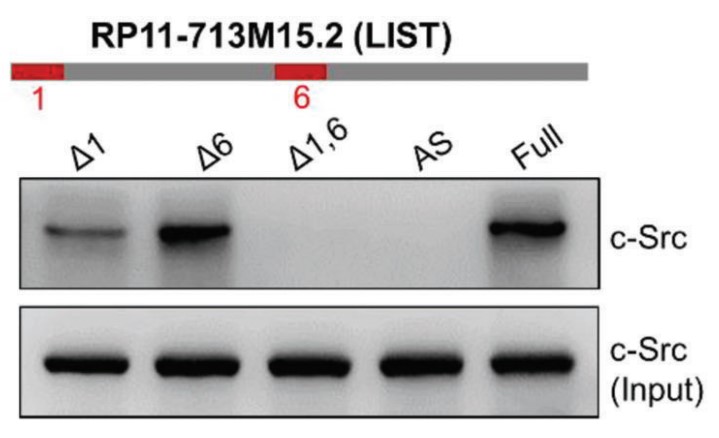
Fig1. Interactions between LIST truncation and c-Src.
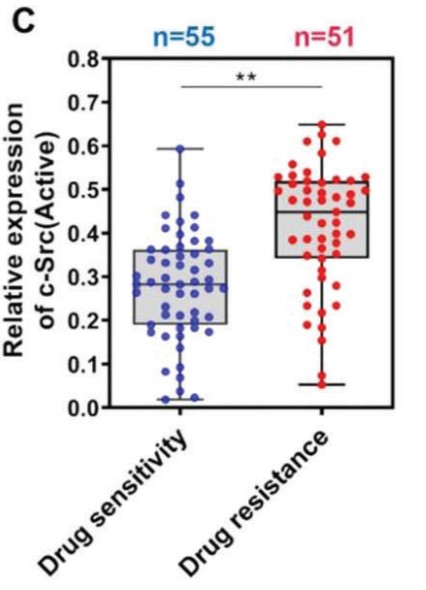
Fig2. The differential expression of c-Src activity between the drug-sensitive and drug-resistant groups was assessed.
Case Study 2: Makio Higuchi, 2021
ATP-competitive inhibitors have been developed as promising anti-cancer agents. However, drug-resistance frequently occurs, and the underlying mechanisms are not fully understood. Here, we show that the activation of c-Src and its downstream phosphorylation cascade can be paradoxically induced by Src-targeted and RTK-targeted kinase inhibitors. We reveal that inhibitor binding induces a conformational change in c-Src, leading to the association of the active form c-Src with focal adhesion kinase (FAK). Reduction of the inhibitor concentration results in the dissociation of inhibitors from the c-Src-FAK complex, which allows c-Src to phosphorylate FAK and initiate FAK-Grb2-mediated Erk signaling. Furthermore, a drug-resistant mutation in c-Src, which reduces the affinity of inhibitors for c-Src, converts Src inhibitors into facilitators of cell proliferation by enhancing the phosphorylation of FAK and Erk in c-Src-mutated cells.
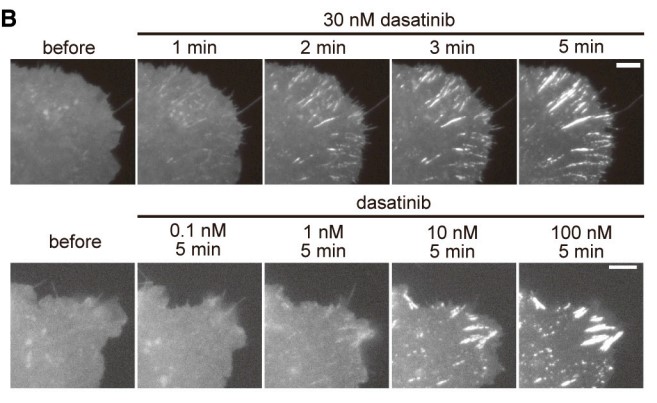
Fig3. Translocation of c-Src-EGFP to FAs induced by 30 nM dasatinib (top) in XTC cells and its dose dependency (bottom).
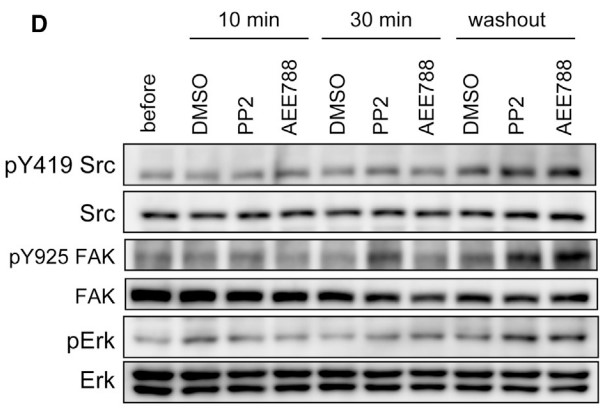
Fig4. Western blot analysis of phospho-Y419 Src, Src (detected with a mouse monoclonal antibody), phospho-Erk (pErk), and Erk1&2 (Erk) in MCF-7 cells treated with inhibitors and subjected to inhibitor washout.
Quality Guarantee
High Purity
.jpg)
Fig1. SDS-PAGE (SRC-533H)
.
.jpg)
Fig2. SDS-PAGE (SRC-1100H)
Involved Pathway
SRC involved in several pathways and played different roles in them. We selected most pathways SRC participated on our site, such as ErbB signaling pathway,Rap signaling pathway,Chemokine signaling pathway, which may be useful for your reference. Also, other proteins which involved in the same pathway with SRC were listed below. Creative BioMart supplied nearly all the proteins listed, you can search them on our site.
| Pathway Name | Pathway Related Protein |
|---|---|
| Tuberculosis | PMAP-36,IFNGR1,RFXANK,CEBPG,IL10RA,FCGR2C,CALM4,MAPK12,SPHK1,FADD |
| Estrogen signaling pathway | CREB5,HSPA2,GNAI3,FKBP4,SHC1,Adcy4,HSPA6,PRKACG,GNAI2,CREB3L1 |
| Inflammatory mediator regulation of TRP channels | CAMK2G,PLCB2,PRKCB,ASIC5,PIK3CD,NGF,MAPK8,HTR2A,GNAQ,GNAS |
| Chemokine signaling pathway | CCL5,CXCL6,CXCR5,RAP1A,NRAS,CCR9,SHC1,PRKACG,CCL3,CCR8 |
| Proteoglycans in cancer | CAMK2B,CTTN,WNT2,PLAU,FZD2,ESR1,PDPK1,PTK2,CBL,PRKACG |
| Rap signaling pathway | BRAF,INS,PFN1,SIPA1L1,PRKD1,GNAS,GNAI2,ID1,MAPK3,FGF13 |
| GnRH signaling pathway | CALM2A,PLCB1,SOS1,PLCB2,PLCB3,CACNA1DA,MAP2K2,CACNA1C,MAP2K3,MAP3K1 |
| Oxytocin signaling pathway | CACNB2,CALML3,PLCB2,MYL9,CACNG1,CACNB3,PRKAG3,MAPK3,CACNG6,PRKCA |
| Prolactin signaling pathway | SHC4,SIRPA,FOXO3,SOCS1,STAT1,GSK3B,MAPK9,PIK3CB,MAPK10,LHB |
Protein Function
SRC has several biochemical functions, for example, ATP binding,SH2 domain binding,SH3/SH2 adaptor activity. Some of the functions are cooperated with other proteins, some of the functions could acted by SRC itself. We selected most functions SRC had, and list some proteins which have the same functions with SRC. You can find most of the proteins on our site.
| Function | Related Protein |
|---|---|
| ATP binding | TARSL2,DDX56,MAP3K13,P2RX4,ABCC9,ATP11A,CLCN5,MCM2,CDK2,CAMK1 |
| ephrin receptor binding | Anks1,EPHA7,NTRK1,EFNA2A,SIPA1L1,ANKS1B,CDK5R1,EFNA2,GRB2,EFNA3B |
| protein binding | TMPRSS15,WAPAL,ARMC9,KLF2,GAB1,ISCU,SUV39H2,CREBBP,HMG20B,HNRNPUL1 |
| hormone receptor binding | JAK3,TNK2,JAK2B,JAK2A,TNK1,TNK2B |
| ion channel binding | AASS,ACTN3,USP10,KCNE4,TCAP,YWHAQ,RIMS3,KCNIP1,PHPT1,FXYD1 |
| SH3/SH2 adaptor activity | SOCS2,IRS4,ITSN2,GRB14,SH2D1A,SHB,GRB10,CRKL,HSH2D,RUSC1 |
| kinase binding | PER3,TOLLIP,NTRK1,CHP,PARK7,SIT1,TAX1BP1,WWC2,FAS,MIDN |
| protein tyrosine kinase activity | LYN,FYNB,EPHB3A,EK1,EPHA4A,BTK,MET,MAP3K11,ERBB2,EGFRA |
| receptor binding | PDGFRB,FZD1,DDX54,ECH1,FYNB,FGF6A,IL29,C5,ANGPTL1,YES1 |
Interacting Protein
SRC has direct interactions with proteins and molecules. Those interactions were detected by several methods such as yeast two hybrid, co-IP, pull-down and so on. We selected proteins and molecules interacted with SRC here. Most of them are supplied by our site. Hope this information will be useful for your research of SRC.
PTPN1;PTK2
SRC Related Signal Pathway
Resources
Research Area
- Cancer Drug Targets
- Apoptosis Intracellular Kinases
- Repulsive Guidance Molecules and Receptors
- Intracellular Kinases in the Akt Pathway
- Src Kinases
- Negative Regulators of the Jak/STAT Pathway
- Adherens Junction Proteins in Endothelial Cells
- Adherens Junction Proteins in VSMC
- Intracellular Signaling Molecules in Angiogenesis
- EMT Induction
- C-type Lectin Receptors
- Clathrin-mediated Endocytosis
- Invadopodia Molecules
- Kinases Localized to Focal Adhesions
- Oncoprotein-Signal Transducers
- FAK-Src Signaling
Related Services
Related Products
References
- Liu, Y; Zhang, LW; et al. DNA-PKcs Deficiency Inhibits Glioblastoma Cell-Derived Angiogenesis After Ionizing Radiation. JOURNAL OF CELLULAR PHYSIOLOGY 230:1094-1103(2015).
- He, YX; Liu, J; et al. Src inhibitor reduces permeability without disturbing vascularization and prevents bone destruction in steroid-associated osteonecrotic lesions in rabbits. SCIENTIFIC REPORTS 5:-(2015).



